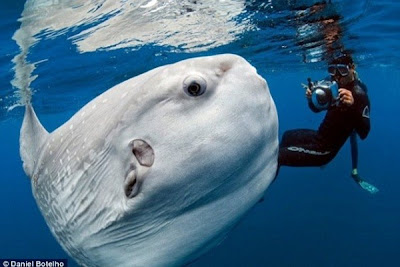Hibrido de delfin en las aguas patagonicas: hibrido entre delfin oscuro y delfin austral en Peninsula Valdes ,Chubut, Argentina
Avistamiento y grabación en video de un posible delfín híbrido entre Lagenorhynchus
obscurus y Lissodelphis peronii en Golfo Nuevo, Pla.Valdés, Chubut, Argentina.
Rafael J. Benegas *; Ricardo D. Orri *;Luis Petite ** y Hugo P. Castello
*Capitán y propietario de embarcación de avistamiento de ballenas, Ribera Marítima s/n°, Puerto
PirámidesChubut; ** Naturalista y Fotógrafo; *** Laboratorio de Mamíferos Marinos, Arg. Mus . Nat .Sc.,
A. Gallardo 470, 1405 Bs. As., Argentina.
Durante diciembre de 1998, en Golfo Nuevo, a 4 millas de Puerto Pirámides, un delfín no descripto de aproximadamente 2,20 m. de largo fue avistado desde un bote por tres de nosotros (R.J.B.;R.D.O.;L.P.) interactuando con una manada de delfines oscuros, Lagenorhynchus obscurus. Durante los primeros avistamientos, el delfín nadaba a gran velocidad y trataba de evitar nuestra embarcación pero más tarde se volvió más curioso El 21/11/98 fue grabado en video mientras nadaba junto a delfines oscuros. Durante varios avistamientos, mientras nadaba activamente en la ola de la proa de nuestro bote o interactuaba con delfines oscuros y cuatro especies de aves marinas, depredó anchoitas, Engraulis anchoita o pejerreyes (Atherinidae) en la superficie. Gracias a la transparencia del agua, fue posible observar un delfín adulto no descrito, mostrando un cuerpo más largo que los delfines oscuros (L. obscurus) , pero similar en coloración y forma corporal al Lissodelphis peronii, a excepción del pico que no es completamente blanco, con un negro ojo rodeado en el área blanca del cuerpo, una diminuta aleta dorsal situada más cerca de la aleta caudal, una franja central gris o blanca que llega hasta el final del pedúnculo caudal, más notoria después de la diminuta aleta dorsal, y diferencias en la distribución de la capa dorsal de color negro. Dado que se conocen asociaciones de L. peronii con delfines oscuros y calderones (Globicephala melaena) proponemos la hipótesis de que una hembra de L. obscurus y un macho de L. peronii se aparearon cuando las manadas de ambas especies probablemente se encontraron en un punto medio de su área de distribución. Después de que nació la cría híbrida, permaneció durante la lactancia con su madre y fue aceptada socialmente por otros delfines oscuros cuando era adulta.
Reyes (1996) ha descrito un híbrido entre L. obscurus y Delphinus capensis para la costa del Perú. Este es el primer avistamiento de un híbrido natural entre dos especies de diferentes géneros en el Atlántico S.O. Se mostro un video de 5 minutos de duración.
Comentarios sobre este articulo:
Este es un comentario en ingles de un especialista que junto lo que nosotros describimos con los datos de otro articulo publicado por una biologa de apellido Yadiz y datos publiicados en N. Zelanda.
•
HYBRID
DOLPHINS •
-
Species: Southern
right whale dolphin (Lissodelphis
peronii)
x Dusky dolphin (Lagenorhynchus
obscurus)
-
Parentage: unknown,
possibly sire x dam
-
Status in the wild: very
likely | Status
in captivity: X
View
the entire hybrid dolphin series
It seemed only fair that the first official illustration should be of the hybrid that started it all. This most charismatic of hybrids, the dolphin that shouldn’t have a dorsal fin - and yet does. It’s one of the few wild hybrids to be described in scientific literature but has also been observed by private individuals, most notably whale-watchers off Kaikoura, New Zealand. Since no DNA tests have been done their status is not certain. But the strong known association between the presumed parent species, and the intermediate features make the hybrid ‘very likely’. Hybrids have been seen in mixed species groups as well as the sole company of Dusky dolphins, making this the possible maternal parent species.
I find the right whale dolphin hybrid especially interesting because they combine a very stark black-and-white pattern with more subtle markings. Without photographs it would be hard to guess what colouration would dominate. As it turns out: Lissodelphis does. The Lagenorhynchus side of the arrangement is only found in the faint hint of a blaze on the flank, a dark marking on the beak, the separate eyespot, the faint grey on the shoulder, and of course that two-toned dorsal fin, albeit diminished in size and shape from the original. Note also the pectoral fins which have a most interesting shape. Lissodelphis have very unusual, elongated sickle-shaped pectorals and although somewhat normalised, the shape is still clearly present in the hybrid.
Multiple existing photographs, albeit of varying quality, make this one of the better documented wild hybrids. Very little guesswork was undertaken in the creation of this illustration, mostly with the colouration of the flukes.
•
REFERENCES
•
-
Yadzi, P. (2002). A possible hybrid between the dusky dolphin
(Lagenorhynchus obscurus) and the southern right whale dolphin
(Lissodelphis peronii). Aquatic
Mammals, 28(2),
211-217.
- Benegas,
R. J., Orri, R. D., Pettite, L., Castello, H. P. 2000. Sighting and
video recording of a possible hybrid dolphin between Lagenorhynchus
obscurus and Lissodelphis peronii at Golfo Nuevo, Pla. Valdés,
Chubut, Argentina. Abstracts
of the 7th International American Cetacean Society Meeting,
(Monterey).
-
Several photographs taken by private individuals.




Comentarios
Publicar un comentario